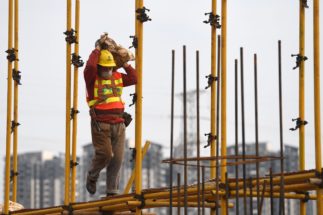There are now over 14,000 registered cases of Coronavirus in Latin America, lockdowns in Argentina, Uruguay, Colombia, Chile, Ecuador, Peru, Guatemala, El Salvador and Bolivia, and voluntary isolation in most countries.
“The COVID-19 crisis will go down in history as one of the worst the world has ever experienced,” Alicia Bárcena, Executive Secretary of the Economic Commission for Latin America and the Caribbean (CEPAL) warned as Latin America braces itself for the coronavirus pandemic that has ravaged the world over the past month.
“The disease jeopardises human health and will impact an already weakened world economy, affecting it on both the supply and demand sides,” Bárcena said.
The COVID-19 crisis will go down in history as one of the worst the world has ever experienced
CEPAL estimates a 1.8% contraction in regional gross domestic product (GDP), which could raise unemployment by 10%, hike the number of people living in poverty by 35 million to some 220 million of its 620 million inhabitants. Those living in extreme poverty could increase from 67.4 to 90 million.
Decreased economic activity in general, a decline in trade, tourism and investment point towards an imminent crisis. The decrease in economic exchanges with China, the top destination for several Latin American economies’ commodity exports, particularly expose the reliance of Chile, Peru and Brazil to China – and their vulnerability.
1.8%
the expected contraction in Latin America's economy
CEPAL estimates that the region’s exports to China could fall as much as 10.7% in value.
“The key source of downside risk [the financial risk associated with losses] to Latin America is a deterioration of the terms of trade triggered by deep long-lasting impact of a China slowdown on commodity prices,” Alberto Ramos, head of Latin American research at Goldman Sachs, told Reuters.
As the economic blow from the coronavirus ripples through the Latin America – with governments rushing to try and salvage the most vulnerable populations – it has also underscored the dependence of countries on exports with no added value. And the need to diversify exports.
Chile and copper
Chilean President Sebastian Piñera said the coronavirus outbreak will have a “large” economic impact due to lower global prices of copper, the country’s main export – half of which is sent to China.
Bank of America reduced its expectation of growth for Chile from 1.3% to 0.9% this year, due to the additional problems caused by the coronavirus and less investment in the country following social conflicts last year.
The Chilean Commission on Copper (Cochilco) said that copper exports will decrease not only in value but also in quantities this year. Shipments to China were already rescheduled.
“We hope this is only short-term. If that’s not the case, we’ll have to change our plans,” Victor Garay, mining markets coordinator at Cochilco, said.
Peru: fishmeal and copper
Peru has also seen a significant decline in its exports to China, its main foreign market.
In January alone, exports fell by 16% compared to 2019, mainly affecting two staple products: fishmeal (down 38%) and minerals (which fell by 10%), according to ADEX, the national union grouping exporters.
While the latter can be traced to China’s lower demand for copper and international prices falling, the exporters attribute the decrease in fishmeal sales to a fall in production related to fluctuations in anchovy yields in Peruvian seas for natural reasons.
Shortages of Chinese inputs will also affect Peru’s manufacturing industries.
“There is going to be a drop in Chinese demand and that the pharmaceuticals and textiles industries here that rely on Chinese raw materials and that are not receiving them in normal conditions will have less productivity and less sales,” ADEX president Erik Fischer told RPP television a week ago, while stressing that, traditionally, January and February have been weaker months in terms of exports to China.
“In March and April we will see how much this issue affects us”, he said.
Brazil and soy
Brazilian officials this week cut growth estimates for 2020 to 0.02% from 2.3% at the end of last year. Exports have already started to suffer the blow, falling 6.2% compared to last year. Commodities exports fell over 20%, mostly a consequence of the economic crisis in China, Brazil’s biggest trading partner.
But on Monday, industry lobby groups said soybean exports will not be affected by the crisis, and maintained their forecast that Brazil would sell around 73 million tonnes this year. The sector sees no signs the demand for soybeans will wane as 20% of its next harvest has already been sold in future contracts.
“Brazilians can rest assured that we are going to do our part to keep the economy warm, even with this coronavirus problem,” said Bartolomeu Braz Pereira, the president of the Brazilian Association of Soybean Producers.
In the stock market, the picture is quite different and Brazilian companies have accumulated losses. BRF, one of Brazil’s main food companies, lost 56.5% of its market value this year.
Argentina: beef and soy
Already on the verge of a new sovereign default, lower prices and fewer commodities exports represent a big blow for Argentina. GDP is expected to shed an extra 0.3% to 0.5%, contracting by 2% overall, rather than the previously estimated 1.5%.
“The main direct effect of coronavirus is manifested on the export of commodities, such as soybeans and, above all, meats,” business consultancy Abeceb said in a report. “China is Argentina’s second market so fewer purchases from there would have a big effect on our economy.”
The main direct effect of coronavirus is manifested on the export of commodities, such as soybeans and, above all, meats
The consultancy estimates a 5% drop in exports this year due to the coronavirus outbreak. This means US$3.4 billion less in revenues, due to fewer sales and lower prices of soy (US$1.36 billion), beef (U$790 million), corn and wheat (US$460 million) and crude oil (U$400 million).
In January, beef exports dropped 32.8% compared to the last quarter of 2019. China accounts for 75% of Argentina’s beef exports and fewer shipments there mainly explain the decline, according to Argentine beef trade chamber CICCRA.
Uruguay and beef
Meanwhile, Uruguay also expects major losses due to the coronavirus as almost 80% of its soy goes to China, as well as 60% of its beef.
Uruguay XXI, the country’s investment and export promotion agency, said in its last monthly report that the coronavirus is “hitting the brakes on international trade so far this year,” claiming that food exports are the most affected so far.
Overall, Uruguayan exports dropped 18.7% in February compared to the same month last year. This was mainly due to lower sales of beef, dairy products, wood and cellulose to China, government data showed.
Nevertheless, Uruguayan trade expert Marcos Soto said most of the impact will be seen in the first few months of the year, claiming there is hope for exports to recover later on as China starts demanding more food products.
Ecuador: less shrimp, more copper
While copper sales plummeted across the region, the reality has been different for Ecuador, as its controversial copper mine in the Amazonian Condor range began production almost at the same time as the Covid-19 outbreak in China.
Did you know…?
In 2017, China bought 11% of Latin America’s total exports
Ecuacorriente, a consortium led by Chinese state-owned companies Tongling Nonferrous Metals Group and China Railway Construction Corporation (CRCC), shipped 22,000 tonnes of copper concentrate to China in January. Another 36,000 tonnes were shipped last week.
As Diálogo Chino reported last year, Mirador is a controversial mining project in the Amazon that is considered of strategic importance to the Ecuadorian government. That has been legally challenged by local indigenous communities who claim many were forcibly evicted and demand the right to prior consultation.
Shrimp exports, however, fell dramatically over the same period. Prices fell with China curbing seafood imports, a large blow to a country that has quadrupled production over the past eight years and banked on China as its major market. Trade recently reopened, but demand from Europe has now fallen and the mood remains glum, according to Undercurrent News, which monitors the industry.
The need for diversification
The Chinese demand for primary commodities has continued rising in the past decade. In 2017, China bought 11% of Latin America’s total exports, including 16% of the agricultural products and 26% of exports from the extractive sector, according to Boston University’s 2019 edition of the China-Latin America Economic Bulletin.
It is necessary to diversify beyond the exploitation of natural resources, otherwise we will always be at the mercy of China’s or any large economic power’s demands
“This is how, as Latin Americans, we are participating in globalisation,” said Yolanda Trápaga, an agricultural economist from the National Autonomous University of Mexico (UNAM). “We are a very weak link in production chains because we mostly export raw materials without aggregated value and through low wages.”
According to Trápaga, diversifying the economy is very important for Latin America, but the region must take control of economic decision-making and not rely on trade partners.
“It is necessary to diversify beyond the exploitation of natural resources, otherwise we will always be at the mercy of China’s or any large economic power’s demands,” she explained. “We have to make a radical change and must conclude that this is an opportunity to evolve in how we do things.”








